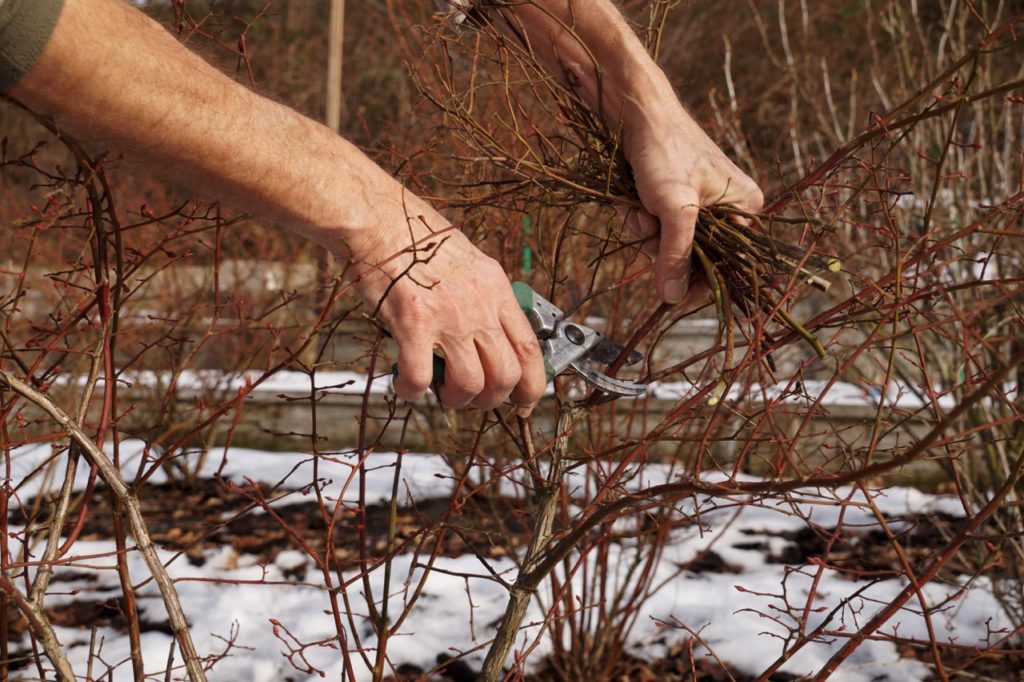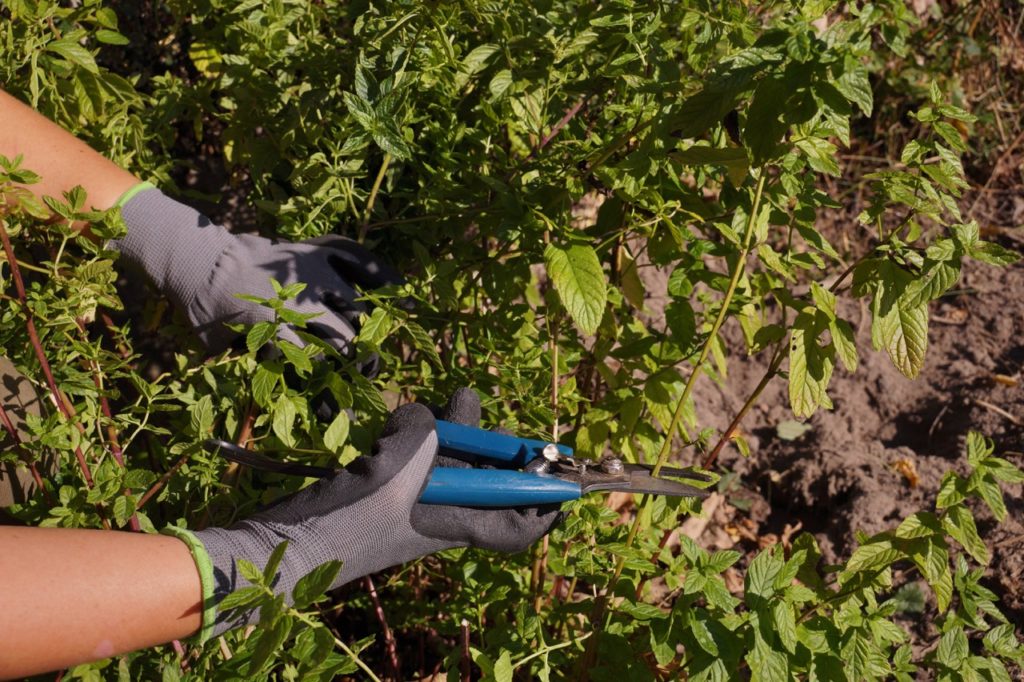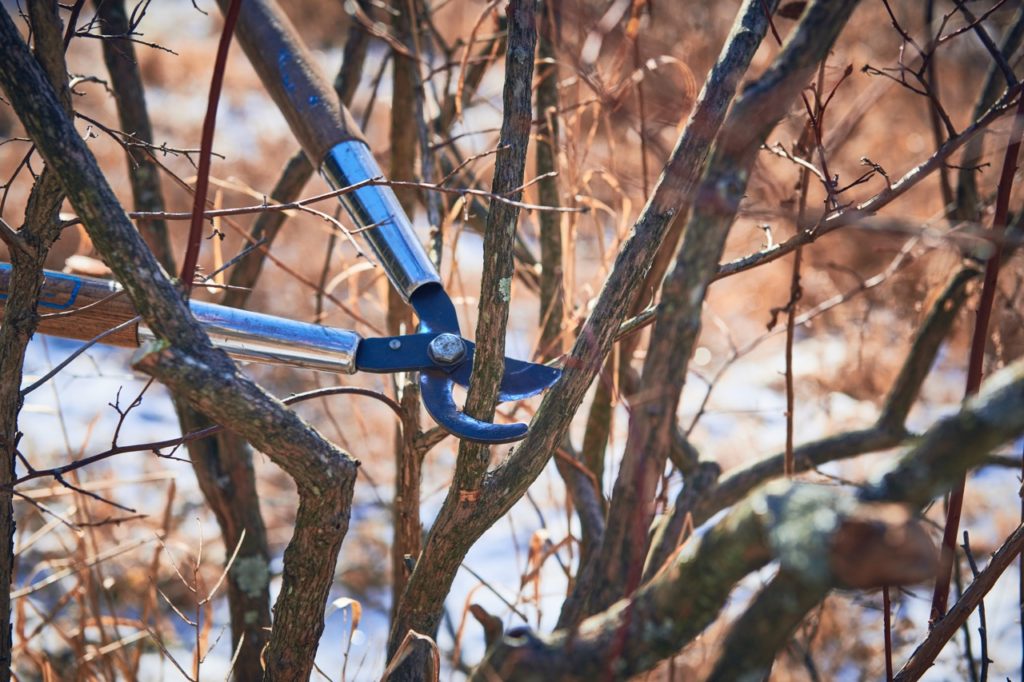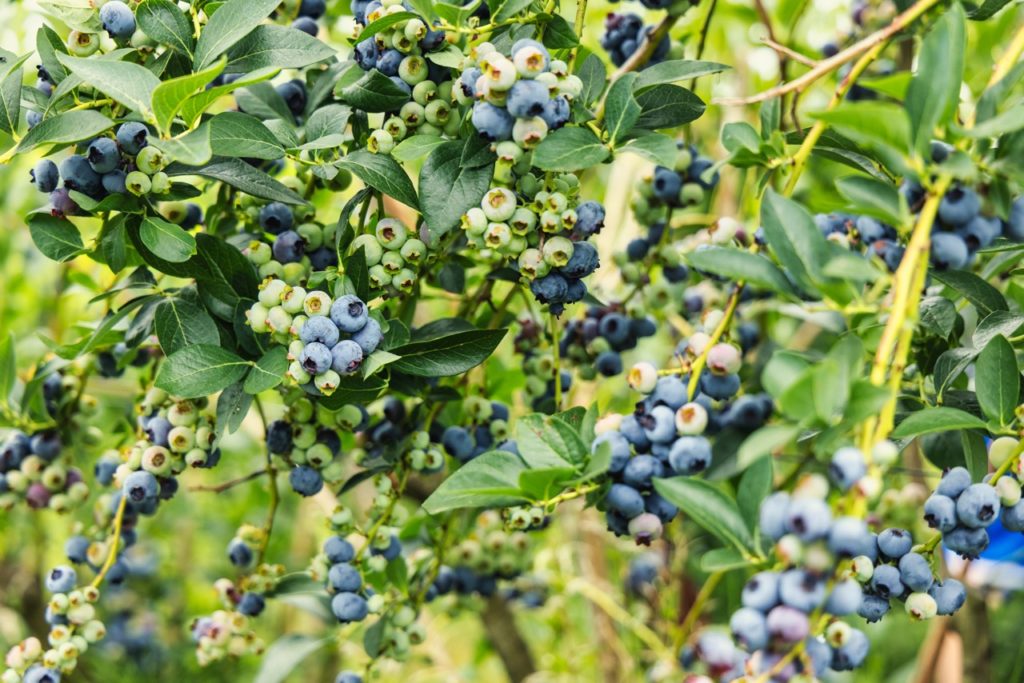Blueberry Pruning Varies By Plant Age – These Are The Steps Depending On The Bush’s Age

Reviewed By COLIN SKELLY

Colin is a Horticulturist and Horticultural Consultant with experience in a range of practical and managerial roles across heritage, commercial and public horticulture. He holds the Royal Horticultural Society’s Master of Horticulture award and has a particular interest in horticultural ecology and naturalistic planting for habitat and climate resilience.
Contributions From LORRAINE SUMMERS

Lorraine has worked with camellia plants for over 40 years. Based in Wimborne (Dorset), the nursery has various camellia species, cultivars and hybrids for sale and has links to the International Camellia Society.
IN THIS GUIDE
BLUEBERRY GUIDES
Container Growing
Cuttings Propagation
Feeding
Harvesting
Pruning
Repotting
Varieties
Winter Care
Blueberries are a delicious fruit and you can maximise your yield by correctly pruning your blueberry bush every year.
However, there are a couple of non-negotiables when it comes to pruning blueberry bushes.
Firstly, you have to prune at specific times of the year.
Secondly, you also have to prune for different purposes and effects depending on the bush’s age.
Be aware that the following instructions are for highbush cultivars (the blueberry most commonly grown in gardens) so please verify what type of blueberry bush you have.
Also be sure to know the age of your blueberry bush because how you prune directly depends on the age of the plant.
| Difficulty | Hard |
| Equipment Required | Gardening gloves, goggles, pruning shears, secateurs |
| When To Prune | Winter or Spring |
When To Prune
In a nutshell, pruning for the bush’s health and vigour should be done in midwinter, and pruning for the yield of fruit should be done in early spring just after buds become visible.
Blueberry bushes should not be pruned in summer or autumn.
Year 1
In midwinter, prune back branches that are weak or diseased, misplaced, or crossing or rubbing together.
Where such branches occur near the base of the plant, cut them all off.
Indeed, keep the lower part of the stem of the young plant free of branches.
Soon after the bush buds sometime in early spring, it is time for the second round of pruning.

Unlike succeeding years, this first year you will focus on all flowering and fruiting stems while ignoring shoots and foliage, as the aim is for the plant to gain vigour and develop before it starts to flower and fruit.
Buds that are narrow and pointed and which typically form up to the midpoint of a cane will put out shoots and leaves, whilst buds that are rounder and swollen, and are typically seen closer to the ends and tips of a cane are flowering buds that will bear fruit.
All of the latter types of buds need to go.
Rub them off with your gloved hand or trim them with secateurs.
“It can be tempting to harvest fruit straight away in the first year from fruit bushes but, with blueberries, think about focussing on the future structure and balance of the plant as an investment in future heavier crops,” says Colin Skelly, a Horticultural Consultant with over 13 years of experience in the industry.
Year 2
In midwinter, prune those branches that are weak or diseased, misplaced, or crossing or rubbing together exactly as you did in year one.
Also, keep the lower part of the stem free of branches.
In addition, judiciously prune any cane in the centre that is growing upward or is bent inward to eliminate future congestion and foster good shape.

In spring, you will not be pruning any canes in year two for age but you have a choice as to which buds to trim.
Though you can leave a few flowering buds, it is best to proceed exactly as in year one.
Sacrifice the fruit for just one more season so that the bush can direct its energies on gaining strength and vigour.
Year 3
You can forego midwinter pruning in year three, but it is better to prune for shape and cane selection in midwinter.
Prune unhealthy and congested canes, and select strong, healthy canes that are growing outward.
Vigorous branches that are shooting out and up may be cut by a third for length and balance.
Also, it is from this year that you can prune with an eye toward achieving a vase shape.

This will allow sunlight to reach the centre of the plant and the main stem, and will also promote air circulation, both of which are critical factors in preventing disease.
In year 3, the target should be to retain 3 canes from each of the 2 previous years, and about 3 new branches.
In spring, strike a balance between removing vegetative buds and fruiting buds.
I’d suggest that in this third season you can retain a third to half of the flowering and fruiting buds and rub out or trim the rest.
Year 4
The guidelines for midwinter pruning are the same as they were the preceding year.
In early spring, year 4 pruning will focus on the choice of canes to prune so as to retain the optimal mix of growth.
From this year on out, the objective is that one-third of the canes should be one-year branches, one-third should be two-year canes, and one-third should be canes that are three years or more.
Start by pruning unhealthy, crossed, congested, and distorted branches.

Such pruning will predominantly remove new growth and three-year canes.
Once this is done, pick and choose which other new and three-year canes to remove, if any more need to be pruned.
Next, prune any canes that do not show flowering buds.
You should be left with canes whose ages are about equally distributed, with 10-12 canes left on the maturing bush.
Years 5 & 6
From year 5 you can skip midwinter pruning altogether, though feel free to prune branches that are dead, damaged, or diseased, and those canes that bore little or no berries.
From year 5, the prime objective is to maximise fruit yield, but this is possible only if sub-objectives are achieved.
“Prune, in the winter, only the old, tired, woody growth which has fruited for two years or more and which will produce only a few poor-quality berries in future,” recommends Lorraine Summers from Trehane Nursery.
Keep the centre of the bush from becoming congested and strive to attain or maintain that vase shape.
A cane that you wish to retain but which has shot out more than other canes, unbalancing the bush, may be cut back by up to a third.

This will reduce fruiting on the cane but it may be necessary to cut it to maintain shape and balance while retaining the cane for structure and necessary foliage.
As above, strive for an equal mix of growth from the past three years such that about one-third of the total canes are from each of the preceding three years.
Keep the best of the new growth – selecting for fruiting buds and prune the rest.
The maturing bush should have 12-15 canes in year 5 and 15-17 canes in year 6.
Year 7
By year 7, if you have taken care of your blueberry bush and have been pruning it correctly, it will be strong and mature.
It can support more branches and foliage, and bear more fruit, so from this year on out you can prune with a lighter hand.

A Blueberry bush from year 7 on out can support 17-20 canes.
In fact, it can support even more than 20 canes, but the goal is not to maximise branching, rather, it is to maximise fruiting while maintaining the bush’s health, vigour, and shape.

